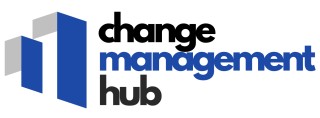-large-teaser.webp)
Understanding the need for change
Recognizing the Impetus for Transformation
In educational settings, the drive for change can stem from various sources, and understanding this need is crucial for any effective leadership strategy. Educational leaders, including teacher leaders and school administrators, must first evaluate the specific challenges facing their institutions to lead change proficiently. This evaluation often incorporates student learning outcomes, teachers' feedback, and educational reforms.
Moreover, harnessing forecasting techniques can be instrumental in anticipating the needs of the school community. Leaders' ability to predict and adapt to future educational trends is vital in preparing schools for upcoming challenges. It’s essential to involve leadership roles in evaluating detailed data and insights that might highlight areas necessitating change. For instance, declining student performance rates or insufficient teaching resources can signal immediate need for improvement.
Professional development initiatives can also reflect an underlying requirement for transformation. Teachers leaders often advocate for ongoing professional learning opportunities, which can drive systemic changes when pursued persistently. Education leaders should thus prioritize building systems that support teachers, allocate time for professional growth, and foster collaboration among colleagues. As teacher leadership evolves, their engagement in identifying and addressing the school's needs becomes more critical.
Ultimately, understanding the need for change lays the foundation for building a vision and garnering stakeholders' engagement, enabling schools to overcome resistance and implement transformation successfully. Recognizing early signs and initiating discussions around these needs are pivotal first steps in fostering a conducive environment for change.
Building a vision for change
Crafting a Clear and Inspiring Direction
Creating a vision for change in educational settings is a pivotal step in the transformation process. A well-articulated vision acts as a roadmap that guides teachers, administrators, and students through the complexities and nuances of educational reform. It’s not just about setting goals—it's about inspiring those involved to embrace shifts in teaching and learning paradigms actively. One of the primary focuses should be on establishing a vision that resonates with the school community. This involves understanding the school’s existing culture, values, and educational objectives. A compelling vision addresses the core needs and aspirations of not just the teachers and students, but the broader school community, including parents and local stakeholders. Teachers and teacher leaders play a crucial role in this vision-building process. Their firsthand classroom experience and insights into student learning can provide a strong foundation for setting realistic, yet ambitious goals. Their participation in drafting the vision helps ensure that the change initiative reflects the reality of the teaching environment and is not merely an administrative directive. Educational leaders can help articulate this vision through clear communication and engaging platforms where open discussion is encouraged. Recognizing the importance of professional learning and development is crucial, as these avenues allow educators to align with the vision and understand their roles in achieving it. When teachers feel supported, they are more likely to contribute positively towards the school’s improvement efforts. Involving stakeholders actively from the outset is important. This involvement not only promotes ownership but also fosters a culture of inclusivity and collaboration. Ensuring that everyone sees how the vision supports the overarching goals of school improvement and student learning can accelerate buy-in and commitment across different educational leadership roles. As the school year progresses, regularly revisiting and refining the vision can help address unforeseen challenges and keep the initiative aligned with ongoing feedback from teachers and school leadership. By maintaining a shared vision, schools can effectively provide the necessary support for teachers, fostering an impactful change that benefits both educators and students alike. For insights into enhancing strategic decisions within this context, check out this resource on effective portfolio review.Engaging stakeholders in the process
Fostering Collaboration Through Engagement
In educational settings, the role of engaging stakeholders is vital to successfully lead change. This involves having a clear understanding of the stakeholders' perspectives, which include teachers, students, and the wider school community. Establishing a collaborative atmosphere among these diverse groups is essential for the development of a shared vision for change.One approach to facilitate this engagement is through open and transparent communication. This builds trust and fosters a sense of shared responsibility among teacher leaders and their colleagues. Listening to and addressing the concerns of teachers leaders and other relevant stakeholders helps in mitigating apprehensions, thereby creating a conducive environment for change.
Effective school leadership is instrumental in leading change. By involving stakeholders early in the process, leaders can harness the collective intelligence, creativity, and commitment of the team. Schools can adopt professional development sessions to support teachers in enhancing their leadership skills. Teacher leadership roles in this context are invaluable as they bridge the gap between school leaders and other teachers, ensuring that the vision for change is clearly communicated and understood.
Engaging stakeholders also involves allocating adequate time for collaboration and feedback. Regular meetings, workshops, and brainstorming sessions are integral to keep the momentum going. It's during these interactions that professional learning communities can thrive, as they provide a structured space for the school community to contribute and co-create solutions.
Moreover, building strong professional relationships and networks encourages collaboration beyond the school boundaries. This can be pivotal in gaining insights from proven strategies and experiences of other educational institutions. For those interested in exploring rapid ways to implement changes, achieving swift transformation through rapid improvement events can provide actionable insights.
Ultimately, for successful school improvement and student learning advancement, engaging stakeholders effectively means shifting towards a more collaborative, inclusive, and supportive school culture. It empowers every participant, from lead teachers to students, to actively partake in the transformation journey.
Overcoming resistance to change
Addressing Challenges and Winning Support
Dealing with resistance is an integral part of leading change within educational environments. Just as important as understanding the urgency for change and creating a compelling vision, overcoming objections requires a strategic approach. Teachers and school leaders must collaborate, acknowledging the value of every opinion while gently steering the school community toward the desired goal.
Resistance often stems from fear of the unknown or concerns about increased workload without adequate support. To manage these fears, educational leaders should prioritize open communication channels where teachers, students, and other stakeholders feel comfortable voicing their concerns. This builds trust and fosters a cooperative atmosphere, encouraging more active involvement.
Professional development plays a crucial role in equipping educators to handle transitions more effectively. By investing time in training programs that enhance teacher leadership skills, schools empower educators to become change agents. Initiatives like teacher leadership roles not only diversify leadership positions but also ensure a wider net of support across the school community.
- Identify early adopters who are naturally inclined towards change. Partner them with their less enthusiastic colleagues, fostering peer mentorship and support structures.
- Offer clear, consistent communication along with frequent updates on progress and changes. This helps to clarify misconceptions and prevents rumors from spreading.
- Encourage feedback, which can reveal potential resistance sources allowing leaders to adjust strategies accordingly.
By applying these tactics, schools can move forward more smoothly, transforming potential barriers into opportunities for professional growth and school improvement. This ultimately leads to enhanced student learning and enduring positive change within the educational landscape.
Implementing change effectively
Executing Change with Precision in Educational Landscapes
Effectively implementing change within educational settings demands a harmonious blend of leadership, collaboration, and strategic execution. With a clear vision in place and stakeholders engaged, schools must focus on practical steps to embed change smoothly into the daily fabric of educational environments. Engaging teachers and school leaders as change advocates is crucial. Those in leadership roles should harness their influence to inspire and model new practices, ensuring that changes are clearly communicated and understood by all. This fosters a culture where teachers feel supported and enthusiastic about the journey towards school improvement. A successful change implementation requires proper professional development. Offering ongoing training and support equips teachers with the necessary skills and tools to adapt to new methods and technologies, ultimately enhancing student learning. Encouraging teacher leaders to lead professional learning sessions can foster a sense of agency and motivation among colleagues. Allocating sufficient time for transition is essential. Leaders need to consider the school year calendar to minimize disruption and allow teachers ample time for adjustment. Collaborative spaces for teachers to discuss challenges and share strategies can enhance peer support and collective problem-solving. Incorporating feedback mechanisms is a vital component of the implementation phase. Regularly gathering input from teachers, students, and other stakeholders helps identify areas for improvement and ensures the change process remains on track. This feedback not only guides the immediate phase of implementation but also addresses resistance, allowing the school community to move forward effectively. By leveraging leadership positions and fostering a supportive school community, educational institutions can lead change initiatives that produce lasting, positive outcomes. This orchestrated effort between teachers, leaders, and support staff ensures that the transformation aligns with the school's overarching educational goals.Evaluating and sustaining change
Monitoring Progress and Longevity of Change Initiatives
To ensure the success of change initiatives in educational settings, evaluating and sustaining change becomes crucial. After implementing change, it's vital to closely monitor progress. By doing so, schools can assess whether the change is achieving its intended impact on teaching, learning, and the overall educational environment. Regular feedback from teachers, students, and other stakeholders can offer insights into the effects of change. This feedback provides a foundation for fine-tuning strategies to accommodate the evolving needs of the school community. This iterative process empowers teacher leaders and school leadership to adapt to circumstances as they arise while staying aligned with the vision for change. Effective Evaluation Methods By employing various evaluation methods, educational leaders can gather valuable data:- Surveys and Questionnaires: These tools can help in capturing the perceptions and experiences of teachers and students in relation to the changes made. Consider administering them at different points during the school year to capture adjustments and adaptations.
- Focus Groups: Engaging students, teachers, and parents in focus groups allows for more detailed discussions about what's working and what's not. It fosters a collaborative spirit and provides qualitative data.
- Performance Metrics: Analyzing academic performance data is crucial. This includes reviewing student learning outcomes and teacher effectiveness post-change implementation.













